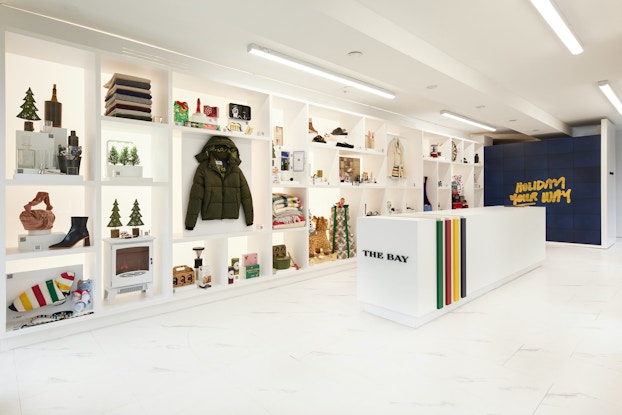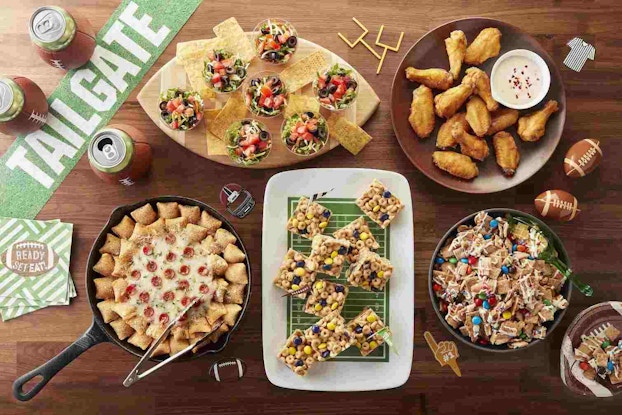
Why it matters:
- Pop-up stores create opportunities for companies to connect with consumers, and technology facilitates those connections.
- Brands can reach their customers directly in a data-rich, direct-sales environment that eliminates the need to go through traditional retail channels.
- Retailers can expand their presence and combine their e-commerce capabilities with temporary physical mini-stores or showrooms.
The rapid growth of e-commerce during the pandemic, along with the technological opportunities created by the advent of 5G connectivity, have created an ideal environment for targeted, experiential pop-up stores as a vehicle for both brands and retailers to connect with consumers.
This past holiday season saw several companies take their pop-up retail experiences to the next level using technology, providing a preview of how these venues might evolve in the years ahead.
“I think pop-ups are going to become a marketing necessity in the future,” said Gavin Bradley, senior creative director for customer experience at Harbor Retail, which creates retail marketing experiences for several multinational brands, including Samsung, General Electric, Nordstrom, Ulta and Breville.
For brands in particular, pop-up stores enable companies to connect directly with customers and bypass traditional retailers. In addition, the onset of 5G technology is equipping pop-ups with extensive data analytics capabilities, Bradley said. That enables brands to create customized experiences for the shoppers who visit the pop-ups, leveraging consumers’ mobile devices by encouraging the scanning of QR codes to access a micro-site for the pop-up, for example, or to download the brand’s app.
These kinds of hyper-customized experiences, as he describes them, represent a new marketing frontier, where brands can promote their products in data-rich environments that can hold consumers’ attention much more effectively than a TV commercial.
Other technologies that companies are deploying in pop-ups to create enhanced experiences for customers and help drive sales include touch screens, location tracking and self-checkout solutions.
By displaying some QR codes, brands can offer products for sale without the traditional components of a retail sales floor, including sales personnel dedicated to collecting payment. “You can either have the inventory there, or you can maybe next-day it to them,” said Bradley. “It just opens up a vast array of opportunities. It's really whatever you want to come up with.”
Pandemic fuels hyper customized pop-up store experiences
Pop-ups were already experiencing strong growth before the pandemic, according a report from real estate firm Cushman & Wakefield, and many observers believe their ongoing success will only be fueled by the new environment created by the pandemic and the ongoing evolution of digital technologies.
In addition, a report from IbisWorld noted that landlords have become more receptive to short-term, flexible leases, which lend themselves to pop-up retail tenants. The research firm pegged the current market size at $14 billion and growing.
Retailers, meanwhile, are leveraging pop-ups to expand their access to consumers by opening mini-stores that can combine physical shopping with e-commerce fulfillment.
Retailer Hudson’s Bay, for example, which operates e-commerce site The Bay, created a tech-enabled pop-up at Stackt Market in Toronto for the holiday season, which leveraged technology to showcase The Bay’s holiday gift guide. Stackt Market is Canada’s largest shipping container market, featuring retailers and brands such as Baileys, Ikea and Thyme Studio, in addition to The Bay.
Dubbed “The Bay @ Stackt Market,” Hudson Bay’s pop-up leveraged its “see it, scan it, ship it” technology, which allowed customers to scan the QR code of any item with their smartphone and have it shipped directly to their homes. The pop-up tied in with the retailer’s holiday marketing campaign, featuring actress Annie Murphy of Schitt’s Creek fame and brands that included Theragun, Ugg, Zwilling, Dr. Dennis Gross Skincare, Lesley Hampton, Herschel, SMEG, Paw Patrol, Eatable, YSL, Google, Grace & Stella and others.
The pop-up was built “to encourage discovery and inspiration,” the company said, and was meant to feel “like stepping into TheBay.com in real life.”
Customers could also redeem and earn Hudson’s Bay Rewards on all purchases and pay in installments using a flexible payment option from Paybright.
Technology is also enabling brands and retailers to quickly and easily create pop-up venues that suit a range of situations and configurations, from seasonal markets that may remain in place for weeks or months to event-based experiences that can come and go in a day.
[Read: The New Consumer: The Top Trends Shaping the Post-Pandemic Shopper]

Inventory-free pop-ups tap QR codes to sell merchandise at sporting events, concert venues
In the case of event-based tie-ins such as product showcases at sporting events or music performances, for example, brands can set up pop-up retail stores that use video or virtual reality to create a consumer experience without actually having any merchandise on site. By displaying some QR codes, brands can offer products for sale without the traditional components of a retail sales floor, including sales personnel dedicated to collecting payment.
“You can either have the inventory there, or you can maybe next-day it to them,” said Bradley. “It just opens up a vast array of opportunities. It's really whatever you want to come up with.”
Another way brands are approaching the pop-up concept is by creating an entirely virtual experience via a temporary e-commerce website.
Hoover, the maker of vacuums and other housecleaning products, in 2021 created its first online holiday pop-up store, dubbed “Hoover’s Holiday Pop-Up Party,” which enabled it to create exclusive offers and a convenience-driven shopping experience for customers, Brittany Doyle, vice president of marketing and e-commerce at TTI Floor Care North America, the parent of the Hoover, Oreck and Dirt Devil brands, told CO—.
“Shopping around the holiday season can be financially, emotionally and mentally draining,” she said. The online Hoover pop-up provided “the experience where our consumers [could] get in, check out and get on with the holiday.”
CO— aims to bring you inspiration from leading respected experts. However, before making any business decision, you should consult a professional who can advise you based on your individual situation.
Follow us on Instagram for more expert tips & business owners’ stories.
CO—is committed to helping you start, run and grow your small business. Learn more about the benefits of small business membership in the U.S. Chamber of Commerce, here.









